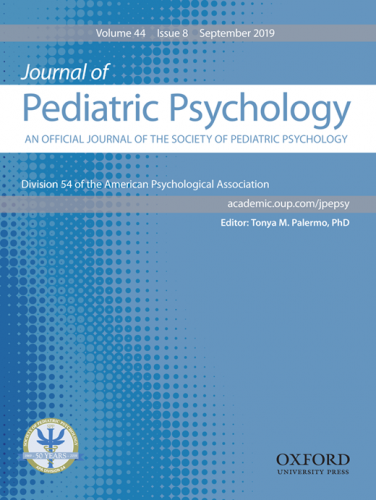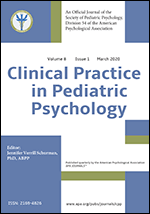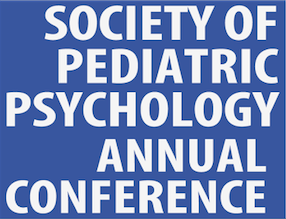Fact Sheet: Cancer in Children and Adolescents
Childhood cancers include various malignancies resulting from uncontrolled proliferation of cells in blood, bone, muscle, skin and the central nervous system (CNS). The causes of childhood cancers are largely unknown. However, there is growing evidence that some children with cancer (over 10%) may have a germline (inherited) cancer predisposition. Childhood cancers are always life-threatening, and are the leading cause of disease-related death among children.
Prevalence and Course
In the US, over 15,000 children are diagnosed with cancer each year. The survival rate is about 88%, but varies by diagnosis, stage and sociodemographics (e.g., age at diagnosis, race). Treatments are intensive and multimodal (chemotherapy, radiation/proton therapy, surgery, hematopoietic cell transplant, immunotherapy) and include experimental therapies. Patients are commonly treated on cancer clinical trials, usually guided by the Children’s Oncology Group or other consortia of pediatric cancer centers, as first-line treatment. However, treatment for newly diagnosed cancer can be with standard or best available treatment that is not a trial. Experimental treatments (or Phase I clinical trials) are more common for those with relapsed cancer, cancer that is not responsive to first-line treatment, or progressive disease. Cancer is a chronic condition; survivors often experience lifelong health issues related to cancer and its treatment. In the US, there are approximately 375,000 adult survivors of childhood cancer—a growing population.
Health and Psychosocial Consequences
Although most children and families demonstrate competence and resilience, concerns for physical and psychosocial quality of life remain. At diagnosis, parents, patients and siblings often experience acute stress. Patients may experience treatment side effects such as fatigue and sleep problems, pain, nausea as well as anxiety related to procedures. Normative developmental tasks/goals (e.g., school, peer relationships, increasing autonomy) are disrupted due to intensive and immunosuppressive treatment. Many families also deal with financial toxicity from the significant cost and time away from work. The experience of relapse is especially distressing and is associated with increased mortality. Bereavement issues are prominent for surviving family members of the children who die. Survivors are at risk for second cancers and over 60 percent develop physical, potentially life-threatening, cancer and treatment-related physical (e.g., cardiac and pulmonary problems), cognitive (e.g., attention, processing speed, and executive functioning problems), and/or psychosocial (e.g., depression, anxiety, posttraumatic stress symptoms, social deficits, and delays in meeting developmental milestones) late effects. Parents and siblings may also suffer chronic psychosocial sequelae. Little is known about the late effects of newer treatments such as immunotherapy.
Evidence-based Screening and Assessment
Psychosocial standards of care, guided by a large-scale effort of expert consensus and review of the evidence, and the Children’s Oncology Group survivorship guidelines include domains of psychosocial screening and assessment for children and adolescents on active treatment and survivors. Detailed guidelines regarding the assessment of psychosocial needs, neuropsychological outcomes, financial burden, and medication adherence are included in The Standards for Psychosocial Care for Children with Cancer and their Families (see reference list). Assessment should include patients and family members from the time of diagnosis through survivorship. Relevant domains of assessment include family functioning, structure and resources; social support; and distress/anxiety and mental health problems of all family members. Health behaviors, adherence, health beliefs, pain, fatigue/sleep, nausea, and neurocognitive status of the patient/survivor are also important to assess. The Psychosocial Assessment Tool (PAT) is a brief parent-report screener of family psychosocial risk validated in English and Spanish for use at diagnosis and throughout treatment.
Evidence-based Psychological Interventions
Cancer-specific evidence-based interventions and those used in other pediatric illnesses include cognitive-behavioral interventions for adherence, pain, and sleep; social skills interventions; and parental problem solving. Bright IDEAS is a cognitive-behavioral problems-solving intervention for parents of children recently diagnosed. The Surviving Cancer Competently Intervention Program targets traumatic stress and family adaptation. The Medical Traumatic Stress Toolkit provides healthcare providers with tools for preventive interventions. Systems-oriented consultation models focus on the child, family and medical team, and target interventions based on family risks and resources (e.g., the Pediatric Psychosocial Preventative Health model). Digital health interventions show promise for enhancing self-management (e.g., adherence, health behaviors) particularly for adolescents and young adults. The Standards for Psychosocial Care for Children with Cancer and their Families (see reference list) includes additional information regarding evidence-based psychosocial, social support, and psychoeducation interventions.
Culture, Diversity, Demographic, and Developmental Factors
Infants are at higher risk for long-term neurocognitive effects due to increased vulnerability of the developing brain. Because adolescence and young adulthood is a period of rapid development across physical, cognitive, and psychosocial domains, they experience worse psychosocial outcomes. Adolescents and young adults are also less likely to receive support services, enroll in clinical trials, and be diagnosed early compared to younger patients due to their transition from pediatric to adult care settings. Minority patients have higher rates of relapse and mortality than White patients due to biological as well as socioeconomic differences although the reasons are not completely known. Because childhood cancer is a chronic condition, efforts need to made to effectively transition adolescent survivors to appropriate adult follow-up care.
Resources
- COG Survivor Guidelines: https://childrensoncologygroup.org/index.php/survivorshipguidelines
- Standards for Psychosocial Care for Children with Cancer and Their Families https://onlinelibrary.wiley.com/toc/15455017/62/S5
- Psychosocial Assessment Tool (PAT): www.psychosocialassessmenttool.org
- SCCIP: https://rtips.cancer.gov/rtips/programDetails.do?programId=102875
- Bright Ideas: https://www.childrensoncologygroup.org/index.php/bright-ideas
- Childhood Cancer Statisitcs: https://curesearch.org/Childhood-Cancer-Statistics
- Medical Traumatic Stress Toolkit: www.healthcaretoolbox.org
Author List: Lisa A. Schwartz, PhD; Lamia P. Barakat, PhD; Melissa Alderfer, PhD; Anne E. Kazak, PhD
Date of Last Update: October, 2019
References
- Abrams, A., Muriel, A. & Wiener. L. (Eds.). Pediatric Psychosocial Oncology: A Textbook for Multidisciplinary Care, pp 51-65. NY: Springer.
- Brodeur, G.M., Nichols, K.E., Plon, S.E., Schiffman, J.D., Malkin, D. (2017). Pediatric Cancer Predisposition and Surveillance: An Overview, and a Tribute to Alfred G. Knudson Jr. Clinical Cancer Research, DOI: 10.1158/1078-0432.CCR-17-0702 Published June
- Coughtrey, A., Millington, A., Bennett, S., Christie, D., Hough, R., Su, M.T., Constantinou, M.P., Shafran, R. (2018). The effectiveness of psycholosocial interventions for psychological outcomes in pediatric oncology: A systematic review. J. of Pain and Symptom Management, 55(3), 1004-1017.
- Hocking, M.C., & Alderfer, M.A. (2012). Neuropsychological sequelae of childhood cancer. In S. Kreitler, M.W. Ben Arush, & A. Martin (Eds.), Pediatric psycho-oncology: Psychosocial aspects and clinical interventions, 2nd edition. (pp. 177-184). Chichester, West Sussex: John Wiley & Sons, Inc.
- Kazak, A. & Noll, R. (2015). The integration of psychology in pediatric oncology research and practice: Collaboration to improve care and outcomes. American Psychologist, 70, 146-58.
- Vannatta, K., Salley, C.G.. (2018). Pediatric cancer. In M. Roberts & R. Steele (Eds.), Handbook of pediatric psychology (5th ed., pp. XXX). New York: Guilford.
-
Wiener, L., Kazak, A., Noll, R.B., Patenaude, A.F., & Kupst, M.J. (2015). Standards for Psychosocial Care for Children with Cancer and their Families: An introduction to the special issue. Pediatric Blood and Cancer, 62, S419-S424.



